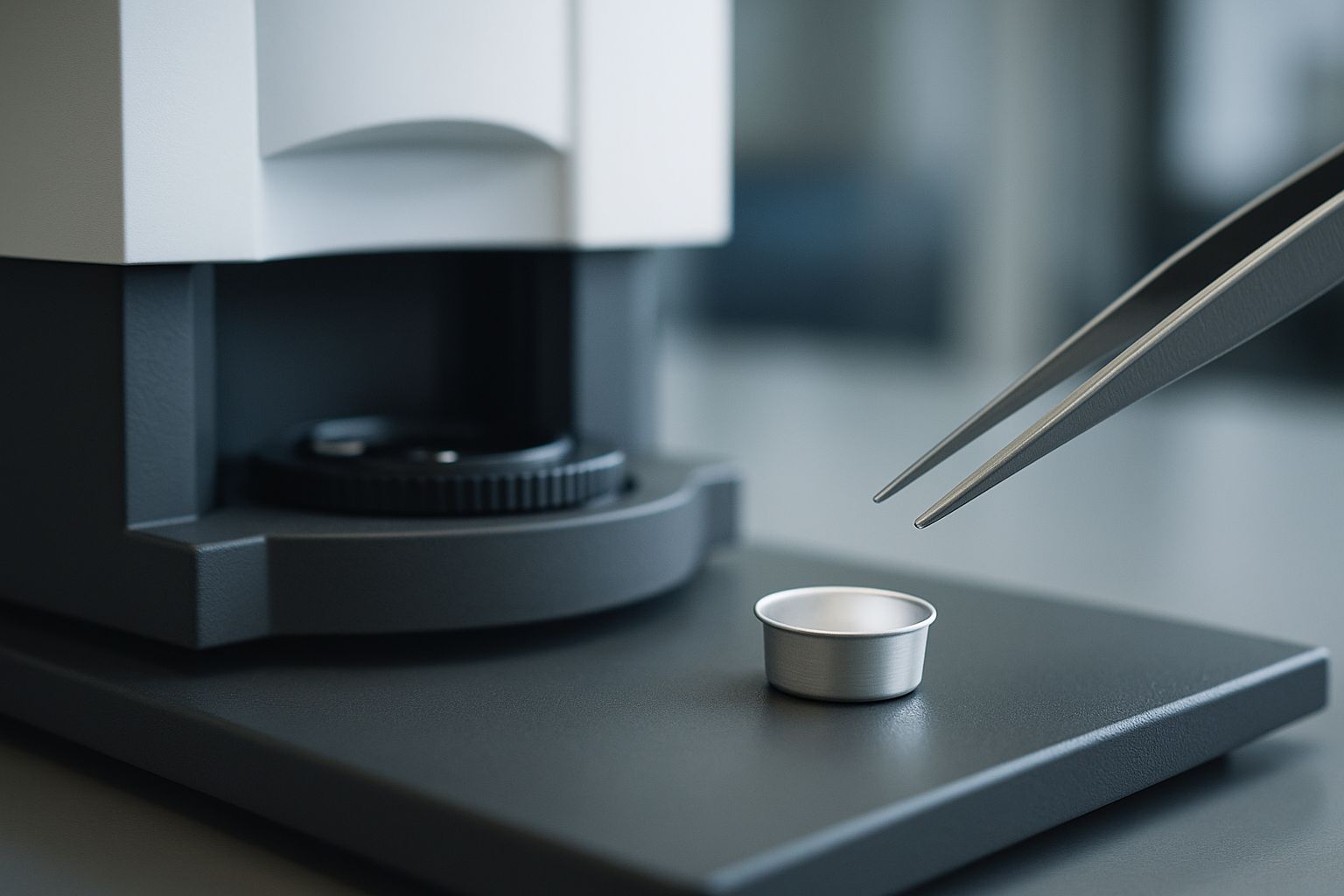Your cart is empty.
shop now
Your cart is empty.
shop now
Incorrectly matched DSC crucibles often lead to unclear test results, lost samples, or expensive equipment problems. Careless compatibility checks can waste both time and money in any lab.
To test compatibility, compare the aluminum DSC crucible’s size and design with your instrument’s manual, then run a test fit and a small-scale trial before fully using new or custom pans. This ensures stable operation.

Instrument compatibility is not a detail to skip. I have seen issues arise from the smallest mismatch. Keep reading for practical, step-by-step checks that help protect your data.
Every instrument design has different pan sizes and shapes. Poorly fitting crucibles may cause errors or even stop a test mid-run.
I make sure my DSC crucible fits by checking its outside diameter, height, and lid style against the manufacturer’s sheet. I confirm with a fit test before I run a real sample.
| Specification | How to Check | Reason |
|---|---|---|
| Pan Diameter | Use calipers to measure and compare to instrument spec (see caliper) | Prevents loose or stuck pans |
| Pan Height | Aligns with disc or plate holder depth | Ensures even heating, avoids lift |
| Lid or Cover Type | Confirm sealing method and fit | Improves control and repeatability |
| Material Grade | Match purity and manufacturer’s recommended material | Avoids unwanted chemical reactions (aluminum alloy info) |
I always compare my crucible’s exact dimensions to the device guide. If needed, I ask suppliers for a sample pan or reference chart. A simple caliper or ruler can save a lot of trouble by catching size mismatches early.
Some labs ignore compatibility, which leads to odd baseline shifts, unclear curves, or unpredictable instrument behavior.
Instrument compatibility is crucial because even small mismatches can cause heat flow errors, leaks, or baseline noise, making it impossible to trust the results of thermal analysis.
| Error or Issue | Likely Cause | Result in Analysis |
|---|---|---|
| Baseline Drift | Poor pan contact or misfit | Shifted readings, hidden peaks (see baseline) |
| Sample Loss | Lid leaks or improper seal | Lower sensitivity or missing transitions |
| Sensor Damage | Pan too tall or unstable | Expensive maintenance, device downtime |
| Non-uniform Heating | Gap between pan and sensor plate | Wider or noisy DSC curves, misleading results |
The more I work with DSC systems, the more I value accurate fit. Some reported problems in scientific literature link directly to pan choice. Many DSC studies stress how a well-matched crucible can improve sensitivity and test repeatability. Clean pan fit protects both data and equipment.
Rushing to try new pans without checks can cause everything from odd data blips to total equipment failure. Ignoring the details costs real money.
The main risks of using incompatible crucibles include test failure, accidental leaks, messed up calibration, or even permanent instrument damage that stops all analysis work.
| Risk | Description | How to Avoid |
|---|---|---|
| Failed Run | Sample pan gets stuck or tips | Always check diameter and height before loading |
| Broken Sensors | Improper clearance damages detection parts (see calorimeter) | Test with empty pan before any real run |
| Sample Loss | Poor seals allow sample out | Choose correct lid and check reference guides |
| Calibration Errors | Wrong pan distorts heat flow | Match pan and test protocol with device recommendations |
I have seen more projects lost to pan selection than to any other cause besides sample contamination. Buyers often forget that thermal instrument sensors are sensitive. Failed compatibility can delay results for weeks and cost thousands in unnecessary repairs or repeat tests.
Proper testing catches problems before they ruin a key analysis run. I learned to treat first-use fit as a non-negotiable step in my workflow.
The right way to test is to fit the new crucible to your instrument without a sample, run a dry heat cycle, and check for sensor alarms, smooth motion, or any irregular baseline in dummy scans.
| Step | Action | What to Watch For |
|---|---|---|
| Fit Pan into Holder | Slide or press gently into place | No force, stable position, correct depth (see lab tools) |
| Check Lid Seal | Attach the lid and look for uniform contact | Lid sits flat, no gaps, no risk of leaks |
| Run Dummy Test | Heat empty pan through standard temperature range | No error codes, stable baseline, smooth motion |
| Review Instrument Feedback | Check system log, alarms, and plots after | No unexpected signals, no odd sounds |
I always test one pan out of a new batch or any custom design first. Most instrument brands mention fit and dry-run checks in their support docs. Taking 10 extra minutes now protects my experiments from future downtime or poor data.